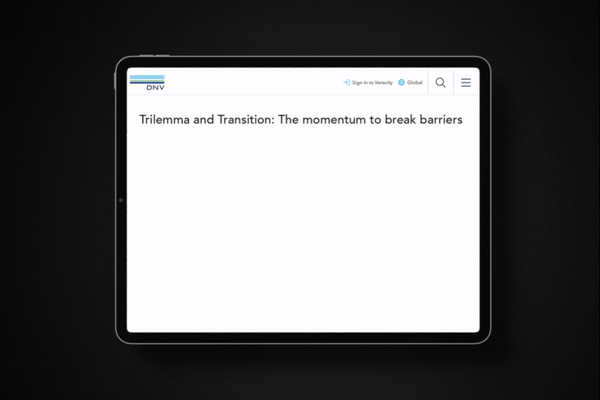Thought leadership evolution: A 10-point overview

Thought leadership evolution is constant. What worked in the past can quickly become obsolete. As a thought leadership specialist working with some the worlds biggest brands for over a decade, FT Longitude has seen it all.
The traditional white paper, previously deemed enough to satisfy ambitious marketers and engaged business leaders, has been transformed. Audiences have come to expect thought leadership campaigns to be immersive, stimulating, multi-channel experiences.
How did this change come about? This article reviews 10 key factors that influenced the evolution of thought leadership and highlights where future opportunities might emerge.
1. Thought leadership has expanded
When FT Longitude was founded, B2B thought leadership was a relatively new idea. Many saw it as a specialty of large professional services firms and associated it with large research programmes and budgets.
Early adopters used thought leadership to build their profiles and to challenge traditional publishers as trusted sources of information. Then start-ups and smaller businesses began to use thought leadership and insight-led content as a way to enter the market and steal the limelight from their more established competitors.

Thought leadership example: DNV
For fast-growing tech companies in particular, thought leadership enabled them to quickly establish themselves as challenger brands, putting them on the radar of senior business leaders for the quality of their thinking and insight.
Since then, thought leadership has become a crucial part of B2B marketing and communications strategies. Companies of all shapes and sizes now recognise the need to adapt to smarter ways of marketing to their audiences. This includes a marked rise in new sectors, such as industrials, engineering companies, consumer goods.
2. Topics have evolved
The things companies want to highlight with their thought leadership have also evolved. Traditionally, a significant part of thought leadership was ‘emotional priming’ – building connections between your brand and expertise that would set you up for future commercial conversations.
But now expectations are greater, as enabling future commercial outcomes through preference is not enough. Brands are expected to bring authenticity and purpose. Winning business not only through their offering, but also their broader role of business in society.
As a result, companies must broadcast their mission and values more widely, reaching beyond just current or prospective customers. Forward-thinking organisations also see current or future employees, investors, and wider policymakers as the focus of their campaigns.
This makes a lot of sense. Attracting and retaining great employees and investors becomes a lot simpler if everyone understands what your business offers, stands for, and where it intends to go.
3. Thought leadership is more centralised
In the past, thought leadership was often a discrete operation, managed and championed by a small subset of the organisation. Now, many organisations have centralised teams that are dedicated to thought leadership and are responsible for setting campaign strategy and direction.
Thinking about content and making connections between thought leadership pieces across an organisation helps to convey a coherent message. In addition, building links between different items of content also helps audiences to navigate them, as well as catering to people at different stages of the buyer journey.
In our experience, this focused approach to thought leadership transforms it from a strategic commercial and marketing activity into a wider expression of an organisation’s values.
4. Insights have got faster
Extensive research programmes are the basis of some of our biggest clients’ flagship campaigns, but they take time – and the current market is unforgiving of slow movers.
As a result, more companies are taking advantage of faster, simpler surveys as a way to speed up the process. In some cases, they can cut down the time it takes to publish insight from several months to a matter of weeks. These shorter surveys also help to ensure that they focus on the stories that truly matter, instead of getting distracted developing multiple narratives.
Companies are also saving time by reinventing some of their processes for producing content. For instance, 82% of respondents in our webinar on proving the value of marketing said that the pace at which they published content had increased in recent years.
5. The rise of B2B influencer marketing
People may more often associate the term ‘influencer marketing’ with fast-moving consumer goods and B2C, but it is now gaining ground in B2B as well, as more and more companies are bolstering their conventional PR strategies with it.
Influencer marketing means that carefully selected experts share thought leadership insights on social media to help raise awareness. This can amplify campaigns far beyond a company’s existing network.
If done well, it can be a direct route to market and avoids the need for the traditional media. And from an audience’s perspective, hearing something from a trusted individual can have a powerful effect.
For a more organic touch, many businesses are increasingly elevating the expertise of their own internal leadership teams and turning their C-suite into influencers.
6. The customer journey has evolved
Gone are the days when thought leadership messaging was only part of ‘top of the funnel’ activities. Today’s marketers know that restricting themselves to macro, awareness-building content – without middle or bottom of the funnel pieces of content that align with the top-level message – creates a dead end in the customer journey.
They know they need content that will help the audience to progress through the funnel and will meet their needs at every stage. Sustained engagement is more likely to attract attention from new and existing customers and strengthen customer loyalty.
For more detail on how to use thought leadership to accelerate your customers buying journey, please consider downloading our guide.

7. Brand stories are more dynamic and visual
B2B content has swiftly migrated from static, one-dimensional white papers to multi-channel, multi-format, immersive experiences and content programmes. Design is no longer an afterthought, as creative content assets are now integral to campaign planning. Subsequently, marketers now need to think about the user experience at the start of the process.

Thought leadership example: Fujitsu Uvance
Giving audiences a more immersive experience using interactive stories and data deepens engagement with today’s thought leadership. This dynamic storytelling enables personalised content based on, for example, their location or their industry.
And visual storytelling is a growth area too, with video, images, illustrations and infographics allowing companies to tell more compelling stories that connect with their audiences – intellectually and emotionally.
8. Activation strategies must be prioritised
Ten years ago, many companies used a ‘one-and-done’ approach to launching their thought leadership. Today, many are getting better at understanding how audiences consume content, where they look for insight, and what their preferred formats and channels are.
Content marketing and thought leadership have traditionally been poles apart. However, the two techniques are increasingly being combined, with content marketing being used to amplify a message and extend it’s reach by repurposing content to appeal to different audiences or be used across multiple online channels.
At FT Longitude, our client work traditionally starts with a comprehensive strategy review. This ensures that the thought leadership we produce has the best possible change of success, as it explores all avenues for promotion (paid, earned, shared, owned).
9. New skills and talent are needed
As thought leadership campaigns evolve, the bar for quality moves higher. Marketing teams – and FT Longitude as a thought leadership agency – have had to up skill in new areas to keep pace with the latest trends.
Research and editorial talent remain fundamental, but companies also need:
- Strategy experts that understand how to align thought leadership with objectives and can help to position your insight in the wider landscape
- Audio, video and design specialists to create cutting-edge assets that will capture attention
- Project managers who can keep these complex projects on track
10. Brands must improve campaign measurement
As many businesses now spend a sizeable proportion of their budget on thought leadership, they understand the importance of measuring the long-term value received from their investment.
However, almost 1/3 of our recent webinar respondents told us that they struggle to measure campaign impact in some areas.
So what’s the answer? Our guide for thought leaders offers real advice on how your business can integrate mixed metrics models to track how your thought leadership activities are affecting brand perception and reputation over time.

Sign up to the newsletter
We help organisations stand out, speak with authority and spark inspiration, so change can happen. That’s real intelligence with influence. Sign up to our newsletter to get regular updates.
Subscribe






 Back
Back

 Book a meeting
Book a meeting
 Book a meeting
Book a meeting

